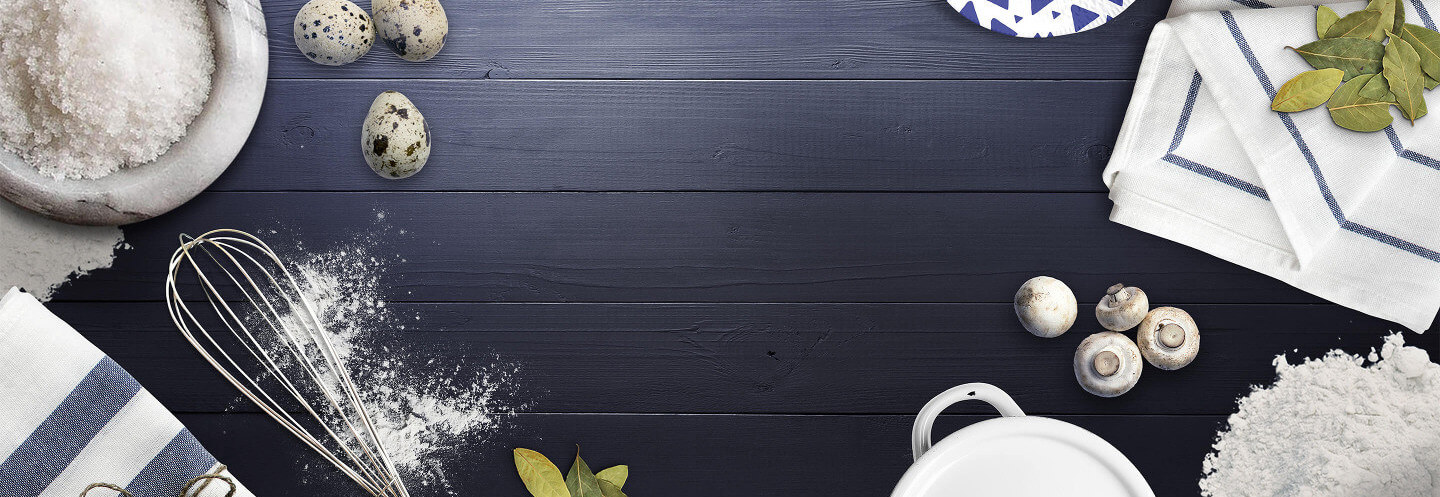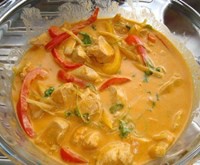https://www.copymethat.com/r/Mb5EfeeEc/thai-red-curry-paste/
54841022
JqfM9NO
Mb5EfeeEc
2024-05-02 02:35:28
Thai Red Curry Paste
loading...
X
base for any red curry dish Thai style
Servings: 4
Servings: 4
Ingredients
- 5 to 6 red, dried chilli peppers
- 3 garlic cloves
- 75 g red onion or shallot
- 0.5 stem lemongrass
- 3 slices of laos
- zest of 0.5 lime
- 3 to 4 coriander balls
- freshly ground white pepper
- knife tip trassi (or 1 canned anchovy)
- Knife tip ground cumin seed
- ¼ tl ground coriander seed
- 1 tbsp bright red paprika powder (optional)
Steps
- Soak the dried chillies 1 to 2 hours in 5 tablespoons boiling water. Drain afterwards.
- Grind all ingredients in a blender, add a few tablespoons of water or oil if necessary and rock the blender roughly back and forth until "it grabs" and you turn a nice, fine curry paste.
Notes
- Knowledge of goods:
- Laos is a popular herb in Indonesian and Thai cuisine. The fresh, bittersweet scent is intoxicatingly strong and is reminiscent of citrus fruits. Just because of the smell, it is a pleasure to work with laos. The taste is reminiscent of that of ginger and at the same time fresh and pungent. Laos is therefore extremely suitable for giving dishes the characteristic 'Oriental' flavour.
- Laos is related to ginger. It is also called (large) galanga, a name that can be confusing because it is also used for other family members. Kentjoer, for example, is known as small galanga. Both kentjoer and laos and ginger are used as a spice and medicinally. Laos is native to Indonesia and it is a perennial plant that can grow up to 2 meters high. The shoots and leaves grow from thick rhizomes. These rhizomes are harvested after a number of years, cut into pieces and shipped fresh or dried and used as a spice.
- Laos is mainly grown in Southeast Asia and Indonesia. Together with ketoembar and cumin it forms the basis of many Indonesian dishes. Laos helps to mask unpleasant odors, which is why it is used in India as a deodorant and as a mouth freshener. In parts of Asia it is also known as an aphrodisiac.
- Laos has a very aromatic smell and taste and is widely used in Indonesian dishes. Laos is also widely used in Thai, Malay and Vietnamese cuisine. It has a peppery, spicy taste similar to that of ginger and citrus fruits. The smell of laos is powerful and pleasant. Moreover, laos has the pleasant property of masking unwanted odors.
- How to use it?
- Put in some thicker, bruised slices in curries or soups and fry them again before serving. Or finely grind into tree trimmings and pasta. The taste resembles that of ginger, but is fresher and less pungent/peppery. It smells a bit like sticky pine, but also a bit like soap. That doesn't sound good but it is. Try to use fresh or, if necessary, frozen laos because in powder form little of the fresh taste remains.
- Trassi:
- Trassi or shrimp paste is a common ingredient in Southeast Asian and South Chinese cuisine. Shrimp paste is the result of the controlled fermentation of shrimp (crushed or not). Shrimp paste is used in, for example, curries in Thailand, salads in Malaysia and Indonesia and in many Surinamese-Javanese dishes from the Surinamese kitchen. In all countries in Southeast Asia it is often used as an ingredient for dips for fish or vegetables. It is also widely used as an ingredient in condiments that have ground chilli peppers as a base, such as the sambal trassi from Indonesian cuisine or the nam prick capiek from Thai cuisine. This form of shrimp paste is the best known variant in the Netherlands and Surinam and is called by its Indonesian name. The import of fish and shrimp, as well as trassi, into the European Union is subject to regulations.



